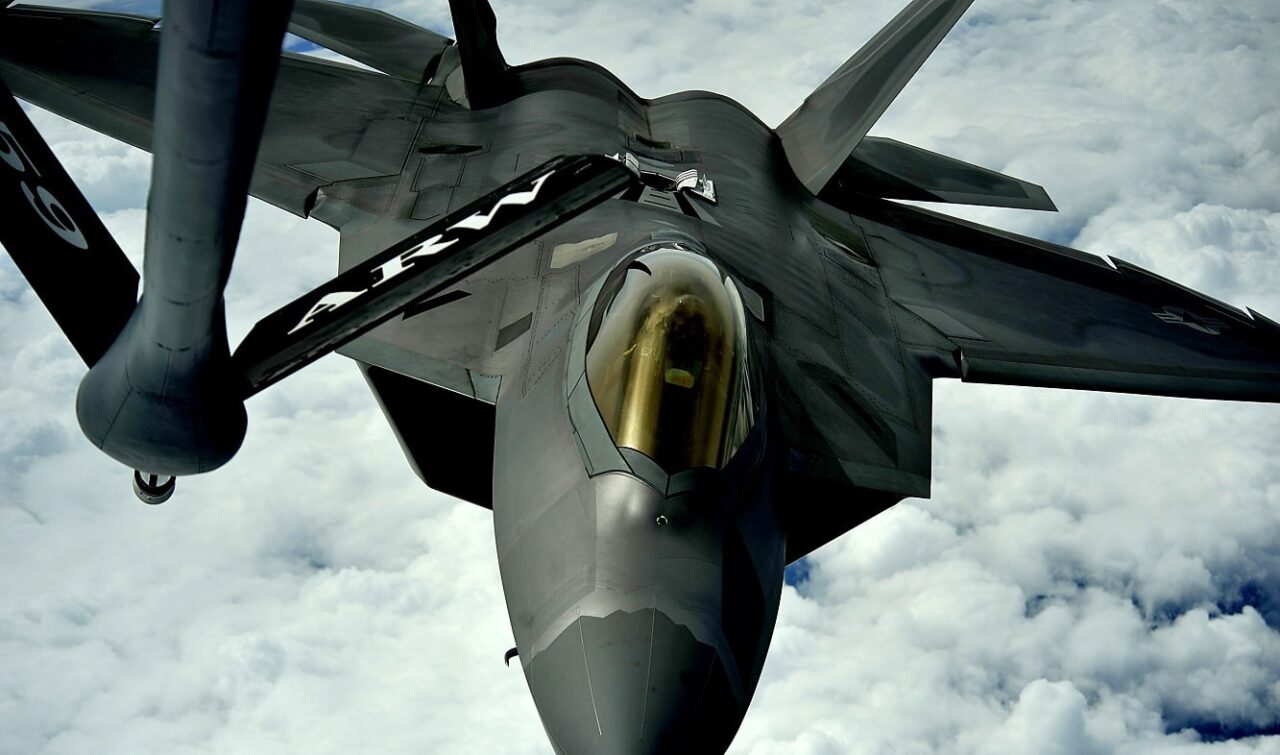The F-22 Raptor is still the best pure fighter aircraft in the world, but its service window is closing. The Air Force is looking to replace the Raptor in 2030 with the F-35 and the Pentagon’s Next Generation Air Dominance (NGAD) fighter, but we haven’t seen one yet out in the wild.
What is the plan if the NGAD isn’t ready, or worse, the Pentagon decides not to develop it at somepoint? The Air Force has only about 183 Raptors in its fleet of planes, and that isn’t nearly enough if war breaks out between the US and China, Russia, or both.
The F-22, however, is extremely expensive. From the start of development, the Air Force spent $67.3 billion. Since the government stopped production short of 200 aircraft, the cost ballooned to $350 million each, which was unsustainable.
The $350 Million F-22Raptor, Unequaled in Capability and Cost
The Lockheed Martin F-22 was the first fifth-generation stealth fighter. We all know that the Raptor can perform; even today, after 30 years in the air, it is still one of the most advanced fighter aircraft in the world.
But it is also the most expensive aircraft ever built. So, how did the Raptor cost US taxpayers $350 million each?
A New Design, With New Fighter Technology
The F-22 took advantage of many innovative concepts never before attempted in an airframe design. The F-22 was thought and developed “outside the box.” Research and development are costly.
The F-22 “was a foray into the future where no one had gone before,” pilot Patrick Bindner wrote.
“While it is almost everyday stuff now – it was nothing less than Star-Wars hardware in comparison with existing equipment at both Lockheed Martin and the USAF [who] were learning how to do it as they went along that pathway. It was a piece of extreme exotica, using cost-is-no-object engineering & materials.
It looks like an airplane, but it was the very first full-on stealth fighter & it was an outrageous price for the time.”
When development for the F-22 began, the program’s expected cost was around $34 billion, but this increased exponentially.
The government spent an estimated $32.4 billion in R&D, nearly reaching the planned expenditure. Procurement cost an additional $34.2 billion, and another $676.6 million went to military construction.
When production ended in FY2010, the total cost was $67.3 billion, and the average unit procurement cost was $185.7 million. The higher $350 million cost was the adjusted inflation price.
The Air Force has 195 aircraft (183 operational) designated for various tasks. Because they require further maintenance costs, the Air Force needs an additional $9 billion to keep them operational through 2030. That money covers maintenance, software, and hardware modernization upgrades required to keep the F-22 relevant for future combat operations.
The F-22 Raptor Is Getting a $16 Billion Upgrade
The F-22 is slated for retirement by 2030, but that isn’t going to happen. The NGAD fighter, even if it is all set into production by then, which is doubtful, will not have sufficient numbers to replace the F-22 fleet.
And if the Air Force spreads that $16 billion across the entirety of the F-22 fleet, it comes out to about $88 million per aircraft. As this video points out, the upgrades are like strapping an F-35 to the rear of every F-22.
F-22 Suffered From Poor Timing
The Raptor came about to fight the Russians if combat ever developed between enemies with no aircraft to speak of in Afghanistan and Iraq.
While the government poured trillions (with a T) of dollars into those two wars, the Raptor didn’t have an enemy to fight. So, instead of the 750 Raptors ordered, the Pentagon slashed that number to less than 200. That caused prices to rise uncontrollably.
Lockheed Martin can’t just turn back on the cannibalized assembly line for the F-35. So, it would be like building an entirely new aircraft, with prices climbing again.
How Do They Proceed?
The Air Force is caught in a quandary. Do they upgrade the F-22s, which, even in a perfect world, will be needed by 2030 and beyond? Or scratch the upgrades and go all in on the NGAD? Keep in mind upgrades can carry over to the NGAD.
The US won’t match China’s production lines. Therefore, they must continue to produce better aircraft. The upgrades must continue while moving toward developing the NGAD.
Author Biography
Steve Balestrieri is a 19FortyFive National Security Columnist. He served as a US Army Special Forces NCO and Warrant Officer. In addition to writing for 19FortyFive, he covers the NFL for PatsFans.com and is a member of the Pro Football Writers of America (PFWA). His work was regularly featured in many military publications.

